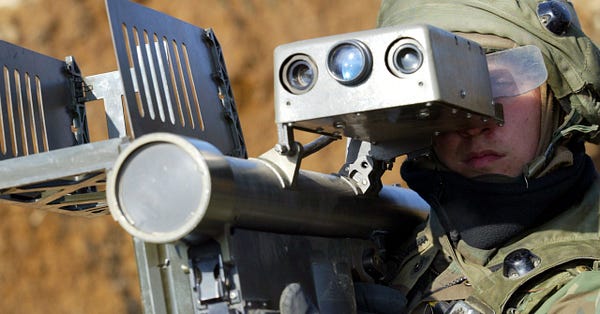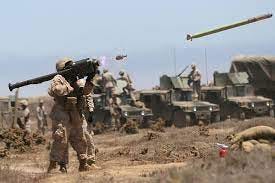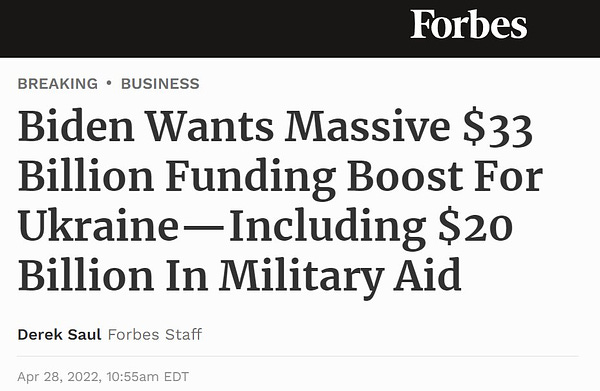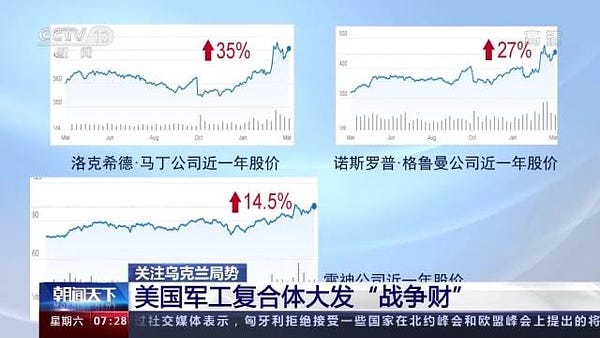Sometimes a simple little story has a way of illustrating a whole bunch of issues all at once. Such is the case with the shipment of Stinger shoulder-fired antiaircraft missiles from the United States to Ukraine. To date, the United States has sent the Ukrainians thousands of these highly effective weapons, which by all accounts are making life very difficult for Russian pilots.
Maybe we should ask though. Where are these missiles coming from?


They are not coming off an assembly line somewhere. They are coming straight out of American military stockpiles. We are taking weapons away from our troops and giving them to the Ukrainians. To date, we have actually given the Ukrainians one-third of all the Stingers we possess.
But surely, we can make more right?
Not so fast. The Department of Defense has not purchased any new Stingers in almost 20 years. In fact, in training, we don’t let our own troops use real Stingers. They have to use fakes and sort of simulate firing the real thing. Stinger missiles you see cost $120,000 apiece. That’s way too expansive for American soldiers to be allowed to fire.
Somebody at the Department of Defense is apparently still doing their job, however, because there is now beginning to be a focus, including Congressional hearings, on this issue. Somebody perhaps is wondering what exactly we will shoot at the enemy when the Chinese invade Taiwan, or the Iranians set fire to the Middle East or Biden actually succeeds in dragging us directly into this conflict in Ukraine.
So, now there is discussion, perhaps a little late, about building new Stingers. But in that regard, there is yet more bad news. It seems not only have we not built any Stingers in a very long time, but since we are rapidly hollowing out our industrial base and shipping it to China, we actually don’t make many of the components that go into a Stinger missile anymore.
Asked about how long it might actually take to start producing Stingers and rebuilding our stockpiles of the missiles Greg Hayes, Raytheon’s chief executive, said the company is working to find some of the materials for the missile but because some components are no longer commercially available, the company will have to redesign electronics in the missile’s seeker head.
“That’s going to take us a little bit of time,” Hayes said. “We’re going to ramp up production this year, but I expect this is going to be ‘23-’24 where we actually see orders come in for the larger replenishments, both on Stinger as well as on Javelin, which has also been very successful in theater.” (The Javelin is an anti-tank missile that we are also handing out like hotcakes to the Ukrainians.)


In short, if we are lucky, we might actually have replacements for all the weapons we are giving away in two years. Until then, best steer clear of a conflict in which we have to shoot at anything. To date, no funds have been allocated to buy more Stingers nor has ongoing discussion about a possible replacement gone anywhere. When we finish giving away the missiles we have the cupboard will be bare.


Meanwhile, though, our Secretary of Defense, who came to his job directly from a stint on Raytheon’s board of directors seems unconcerned. After a recent trip to Ukraine, Secretary Austin took time to declare that the United States was effectively expanding its objectives in this war. No longer are we simply defending Ukraine territory now “We want to see Russia weakened to the degree that it can’t do the kinds of things that it has done in invading Ukraine.” That means Russia should “not have the capability to very quickly reproduce” the forces and equipment that had been lost in Ukraine.
Whatever aid we have been giving presumably will now be expanded appropriately. The fact that we are focused on intensifying a conflict with a nuclear-armed nation may be bad for the world. But, it will definitely be more good news for Raytheon and other huge defense contractors.
The stock price of the world's largest defense contractor Lockheed Martin jumped 28 percent to $453 on March 25th from $354 earlier this year, and Raytheon Technologies Corporation also saw a growth of nearly 20 percent in its stock price over the same period. Since then both stocks and those of other such companies have continued a steady climb.
We might add, of course, that at least 19 federal lawmakers or their spouses hold stock in Raytheon Technologies and Lockheed Martin. These two companies account for the lion’s share of the high-tech weapons being shipped to Kyiv and will, of course, be the ones who will ultimately restock our inventory.


To sum up: Our own national security is being degraded as we hand over to Ukraine crucial weapons our own troops will need should we have to go to war to defend ourselves. Nobody apparently has been minding the store in terms of our industrial base, because we now find we can’t actually readily replace the weapons we are giving away. Our Secretary of Defense (or perhaps more properly Raytheon’s Secretary of Defense) is pouring jet fuel on a fire that may explode into a world war. But it’s all ok, because when the dust settles a bunch of big corporations are going to land huge contracts to build yet more weapons systems, and their stockholders are going to make out like bandits.
Biden is sending Stingers to Ukraine. You lose.




There are no words for this insanity. I'm literally speechless. More power to you, Sam, for having the stamina even to continue reporting on what's happening . . .
Although we may be sending systems out of our War Stockage, I'm sure that there is a "Shelf Life" on these systems and they may have contracts in the works to put people back to work in the Defense industry to build and re-stock these missiles with new ones. That is if this administration is that smart, which hasn't proven to be a fact so far.